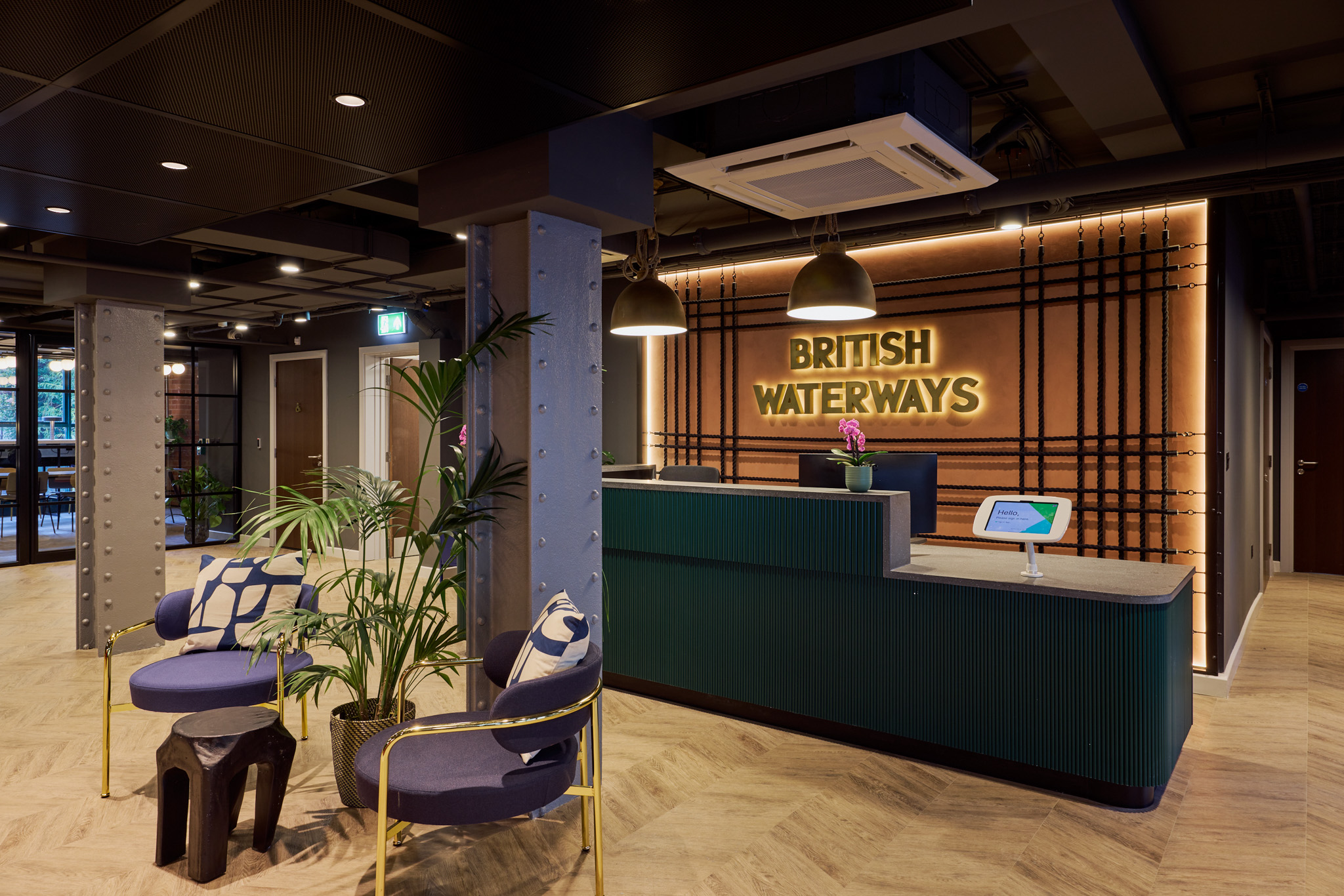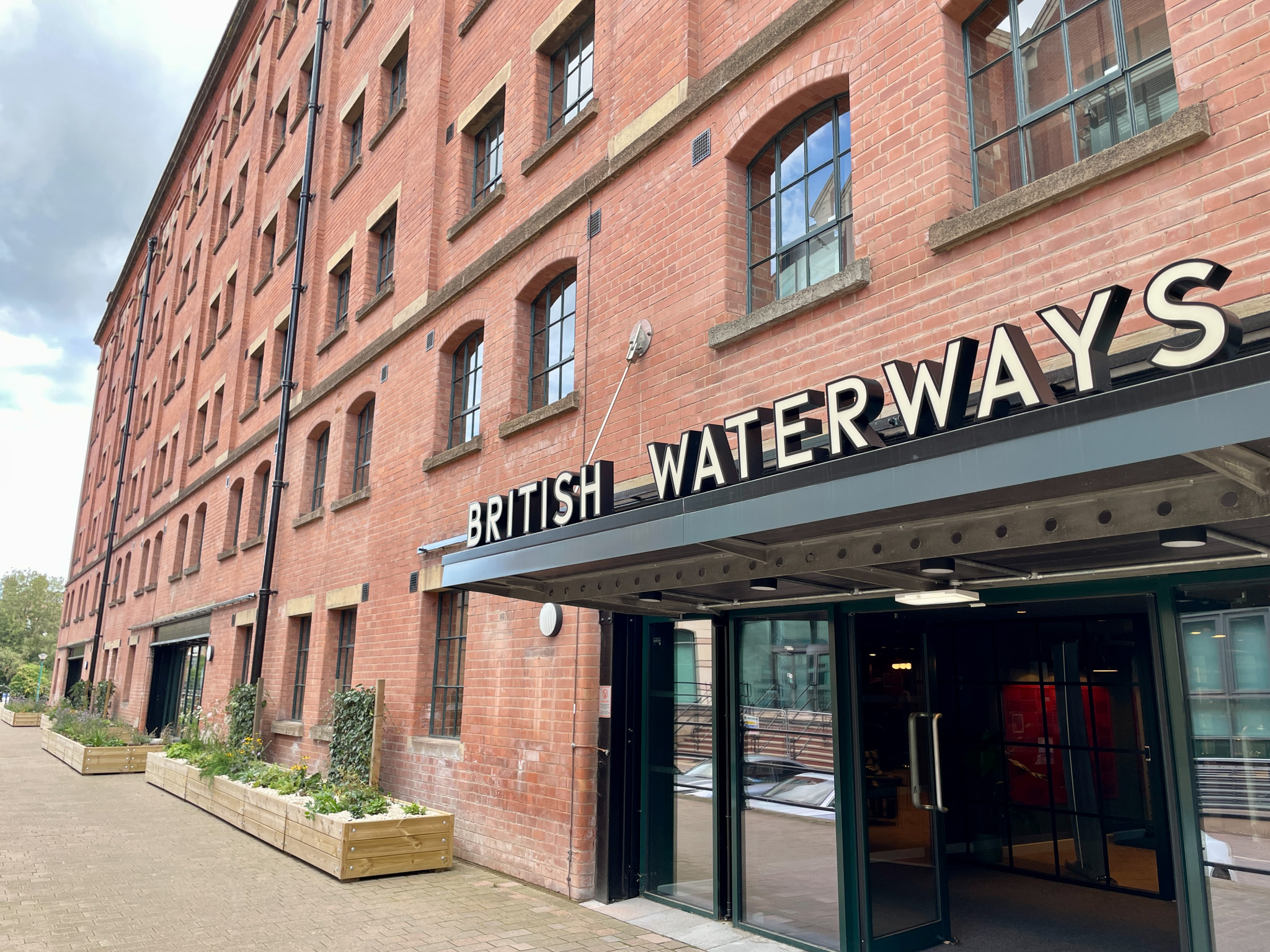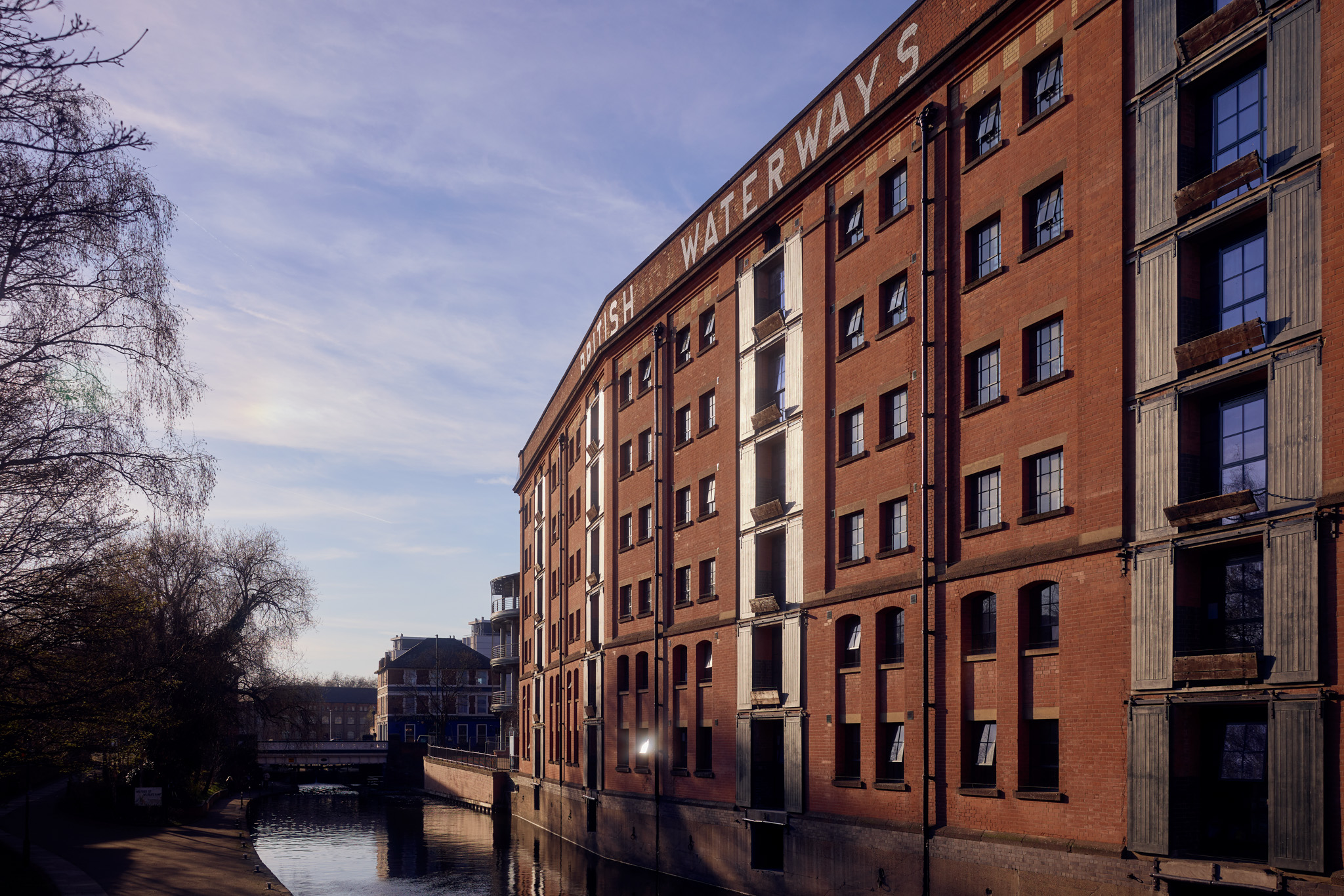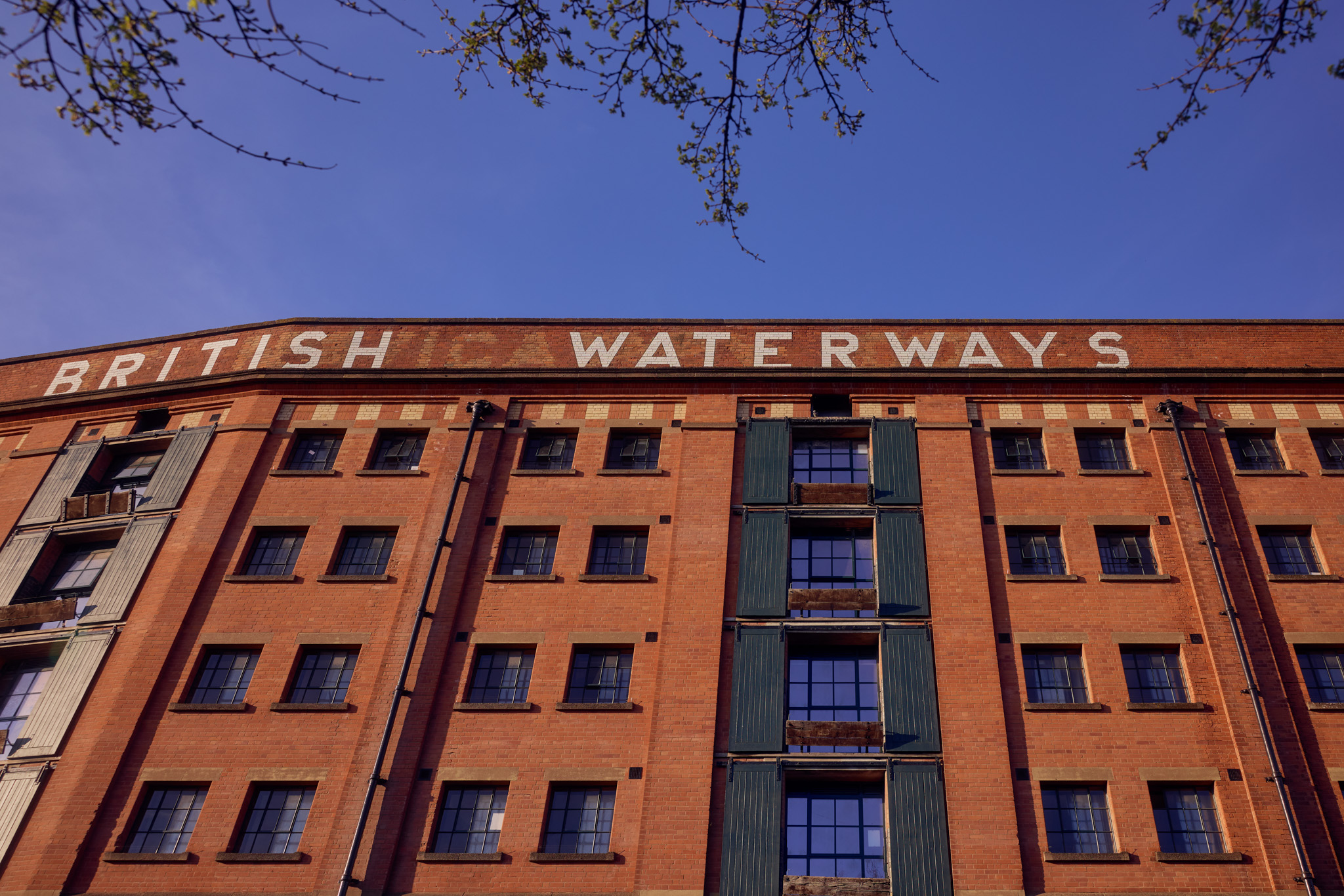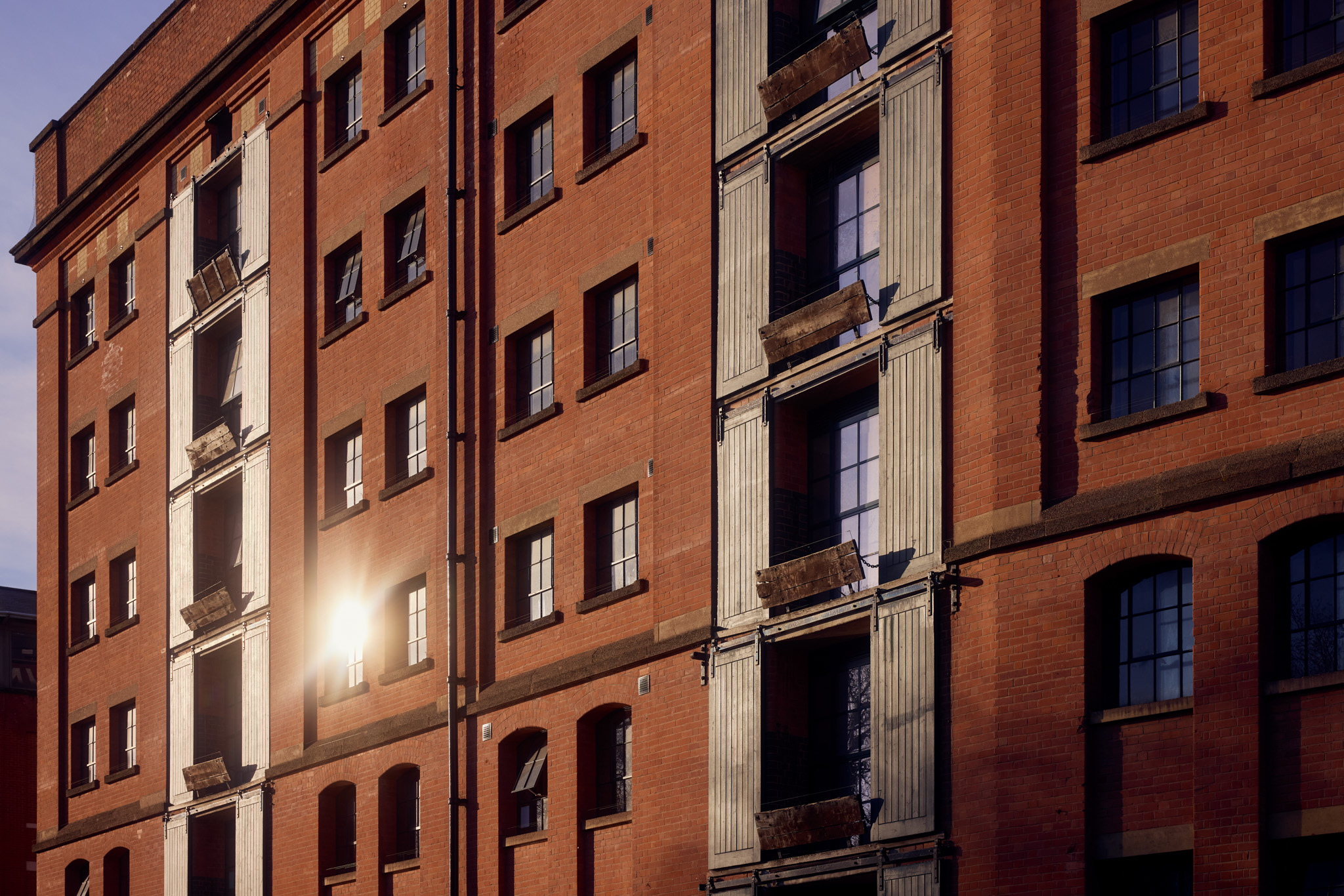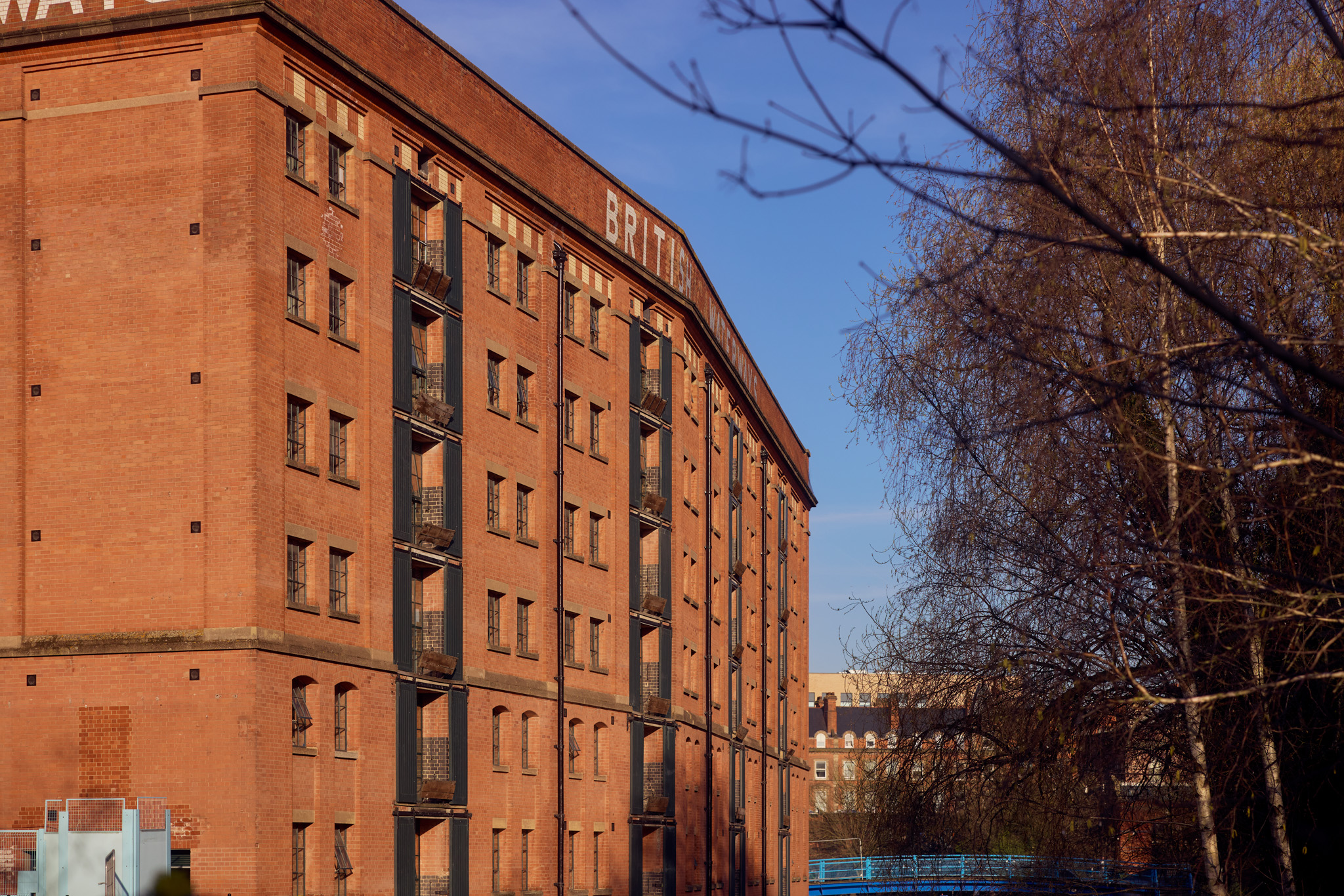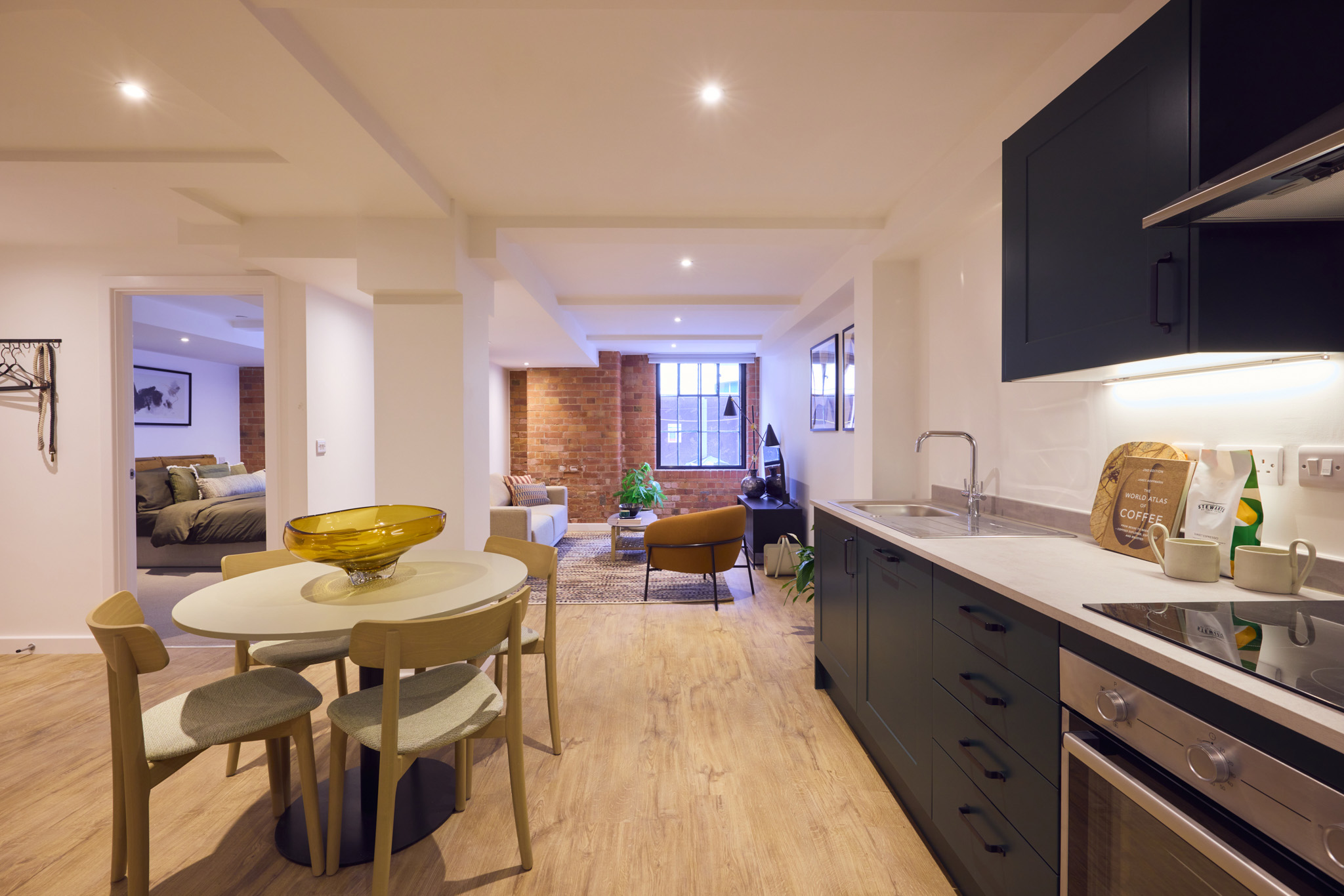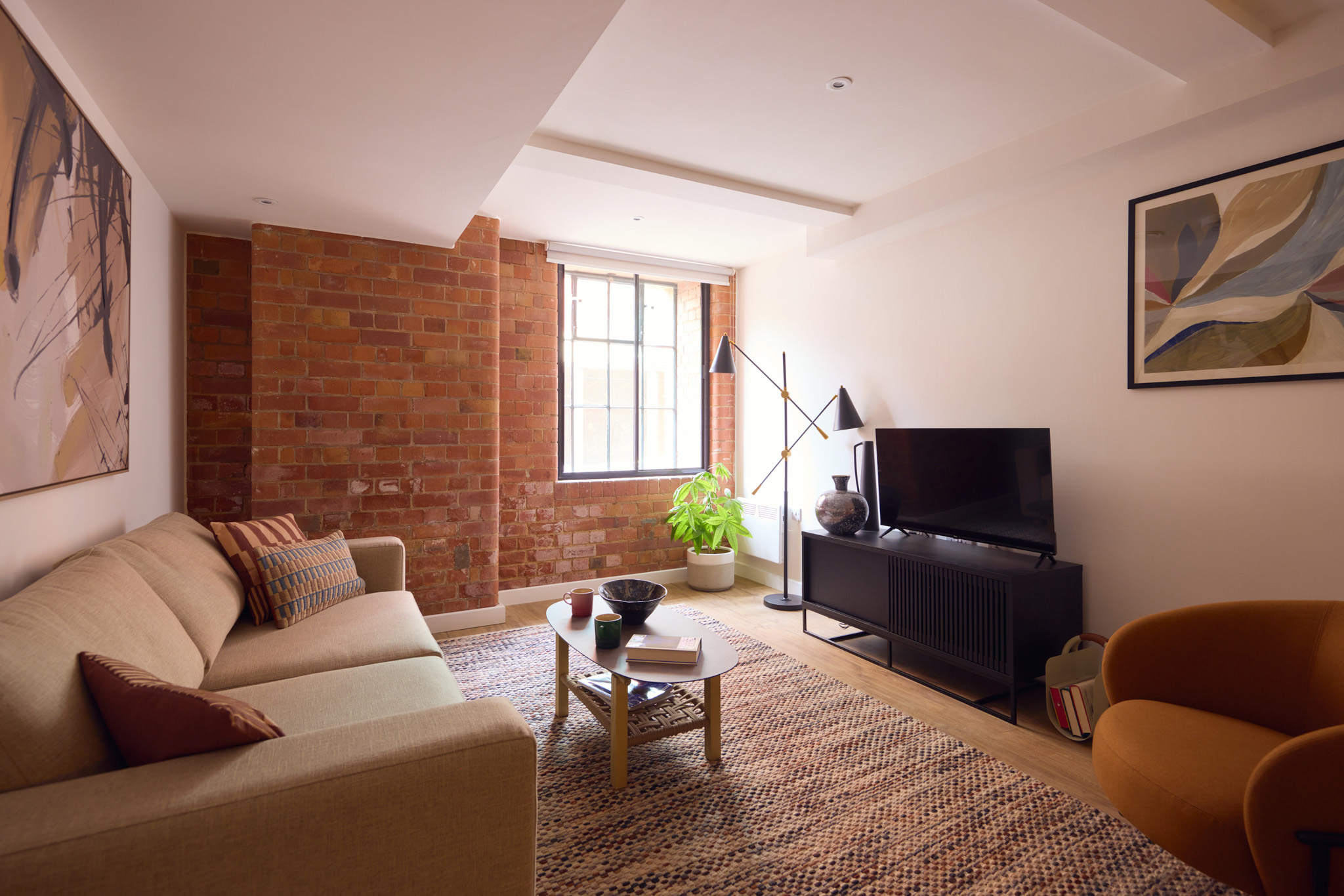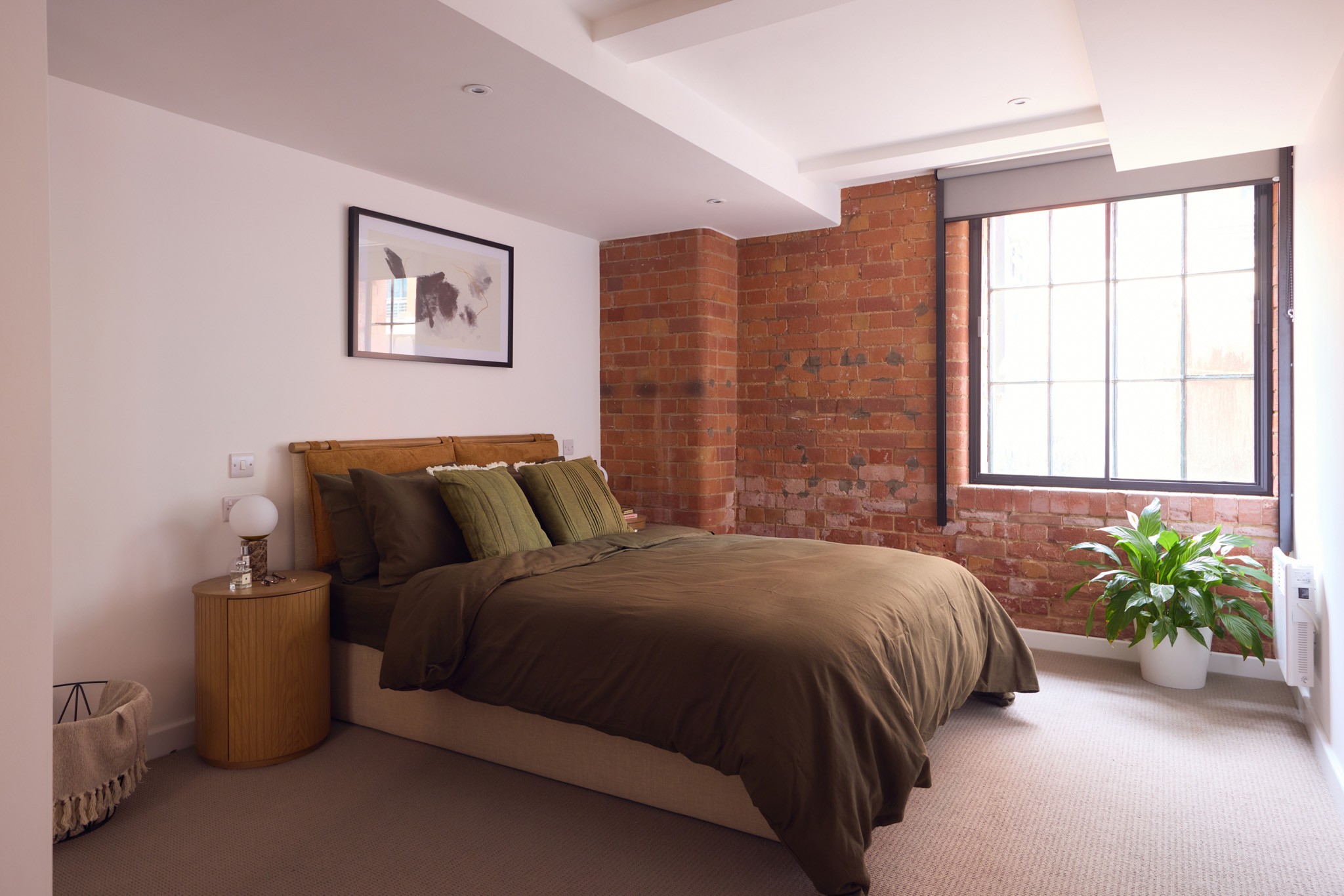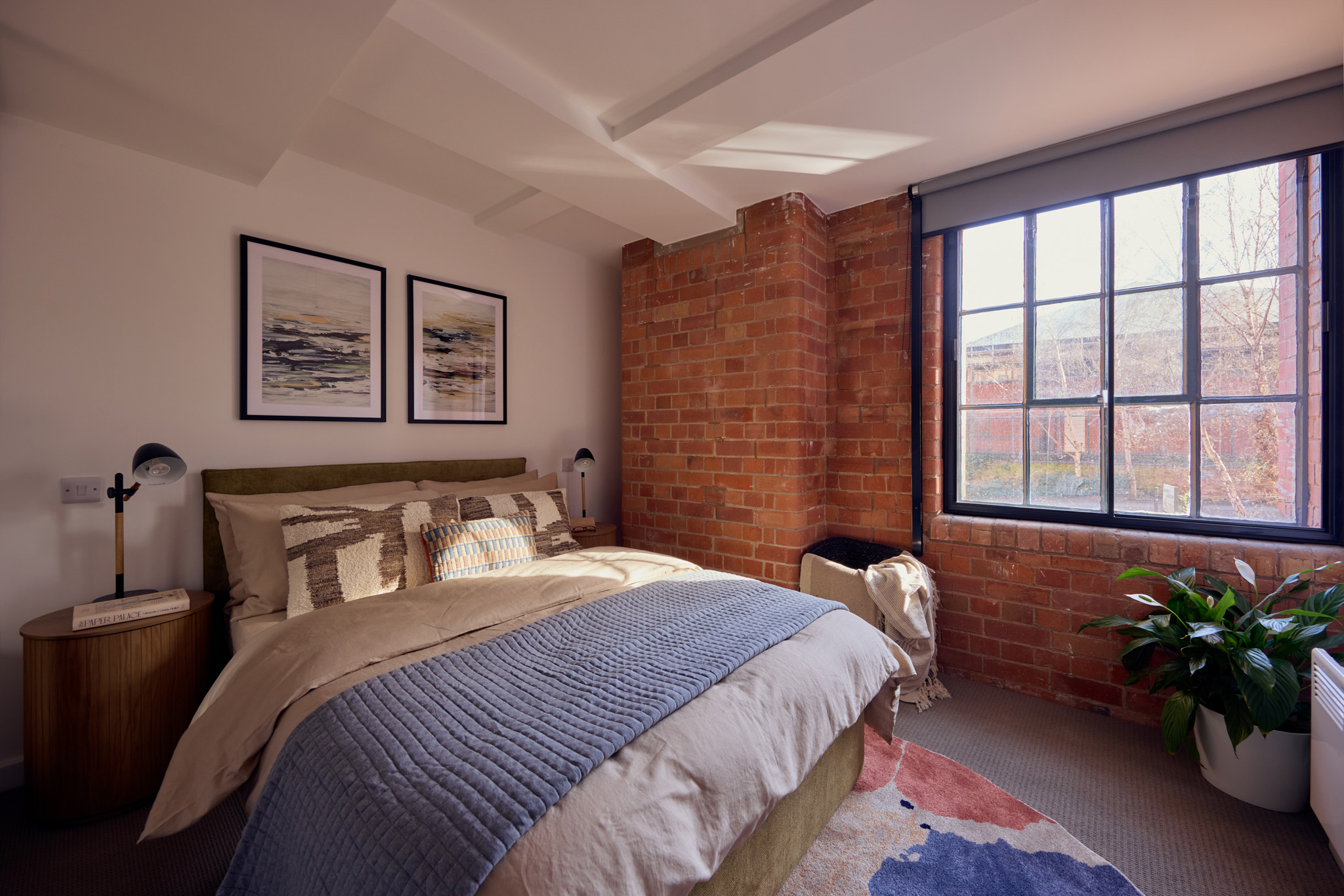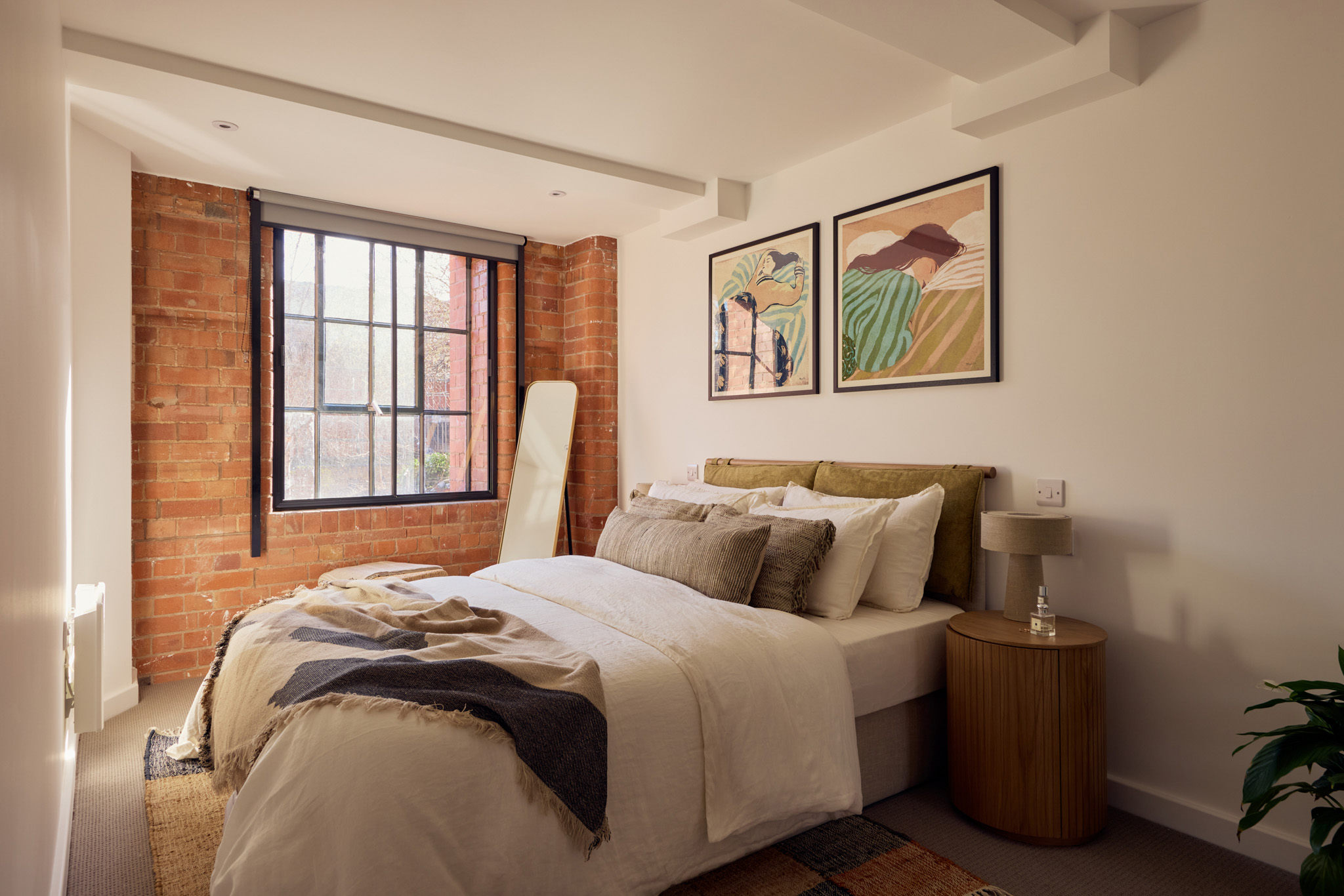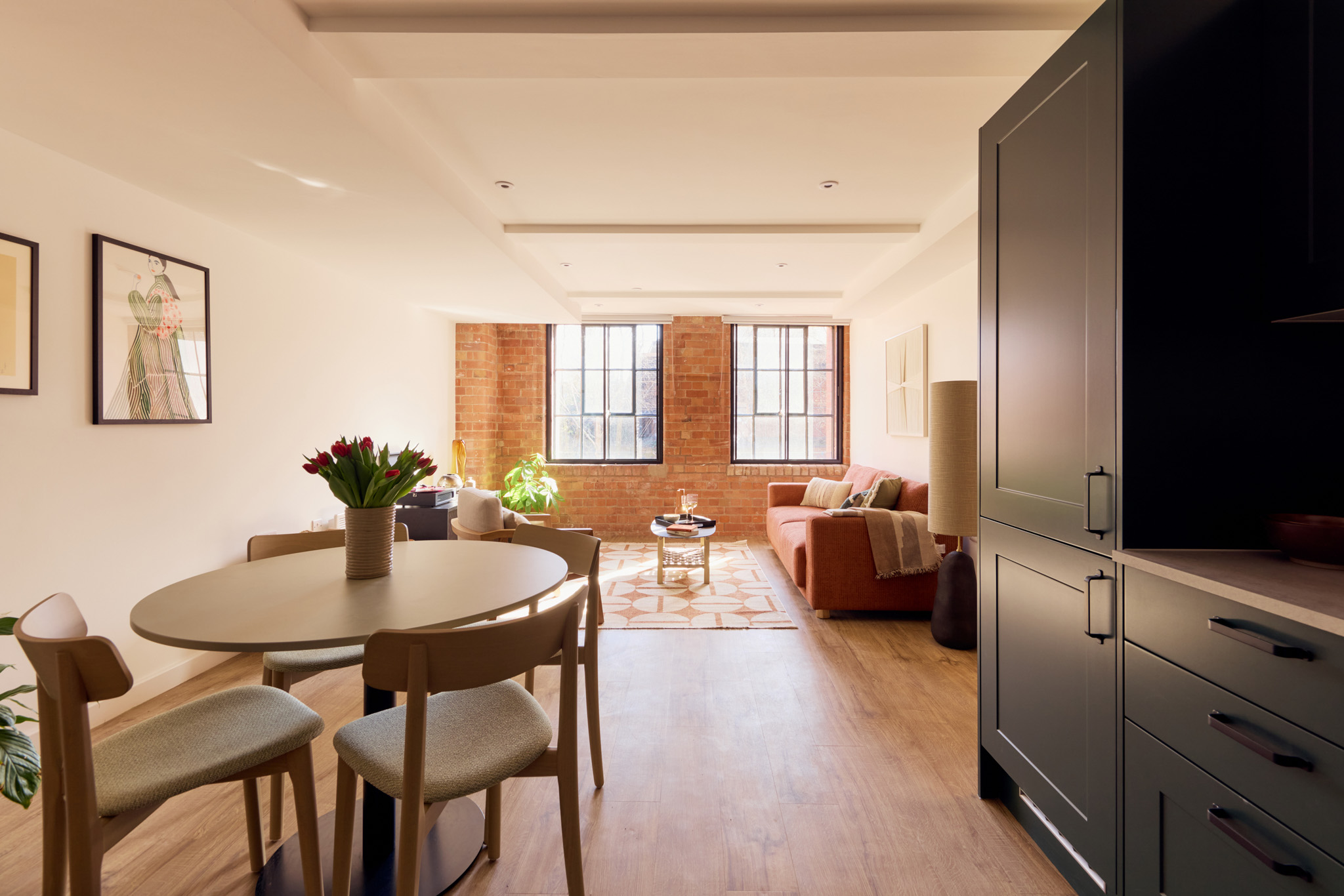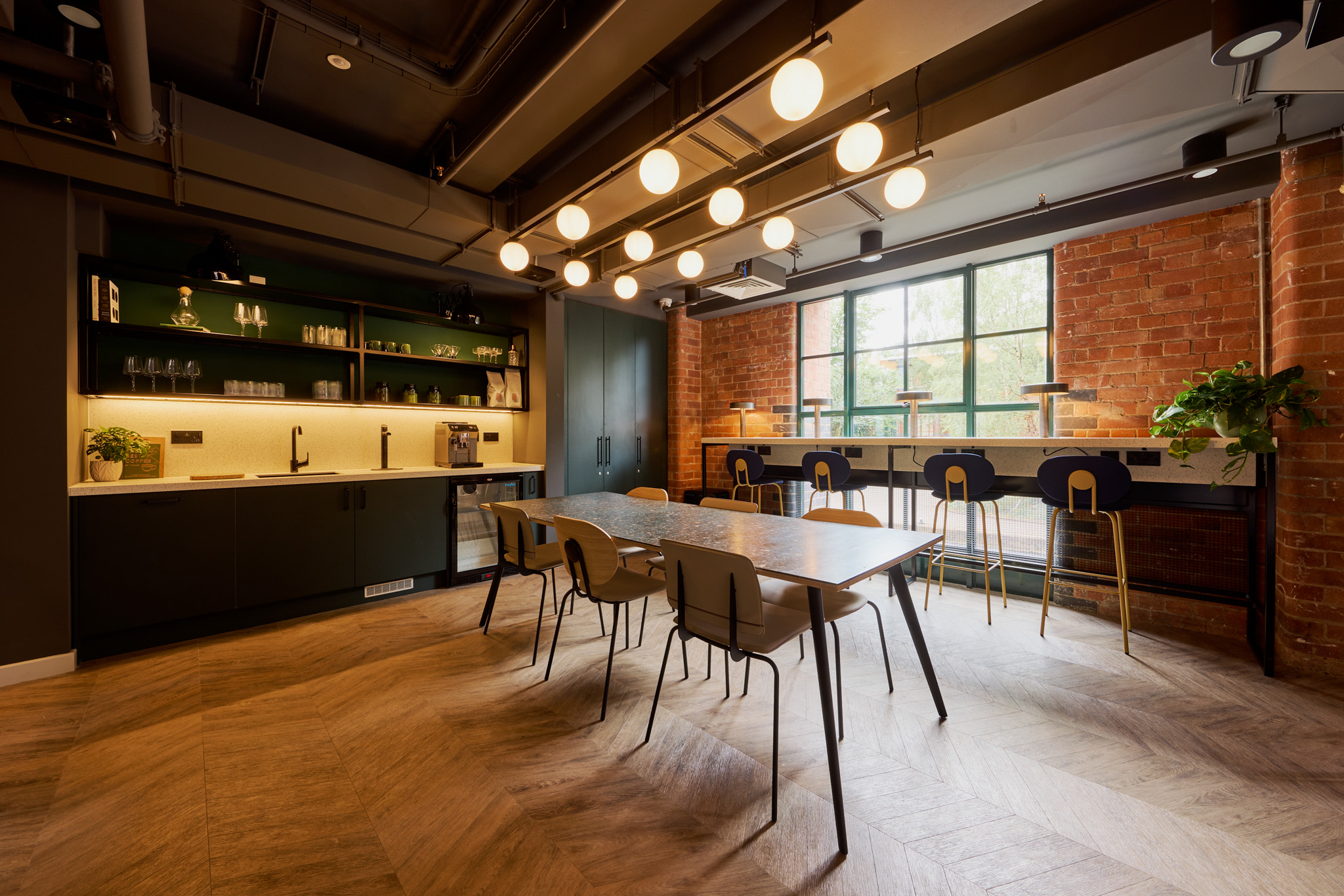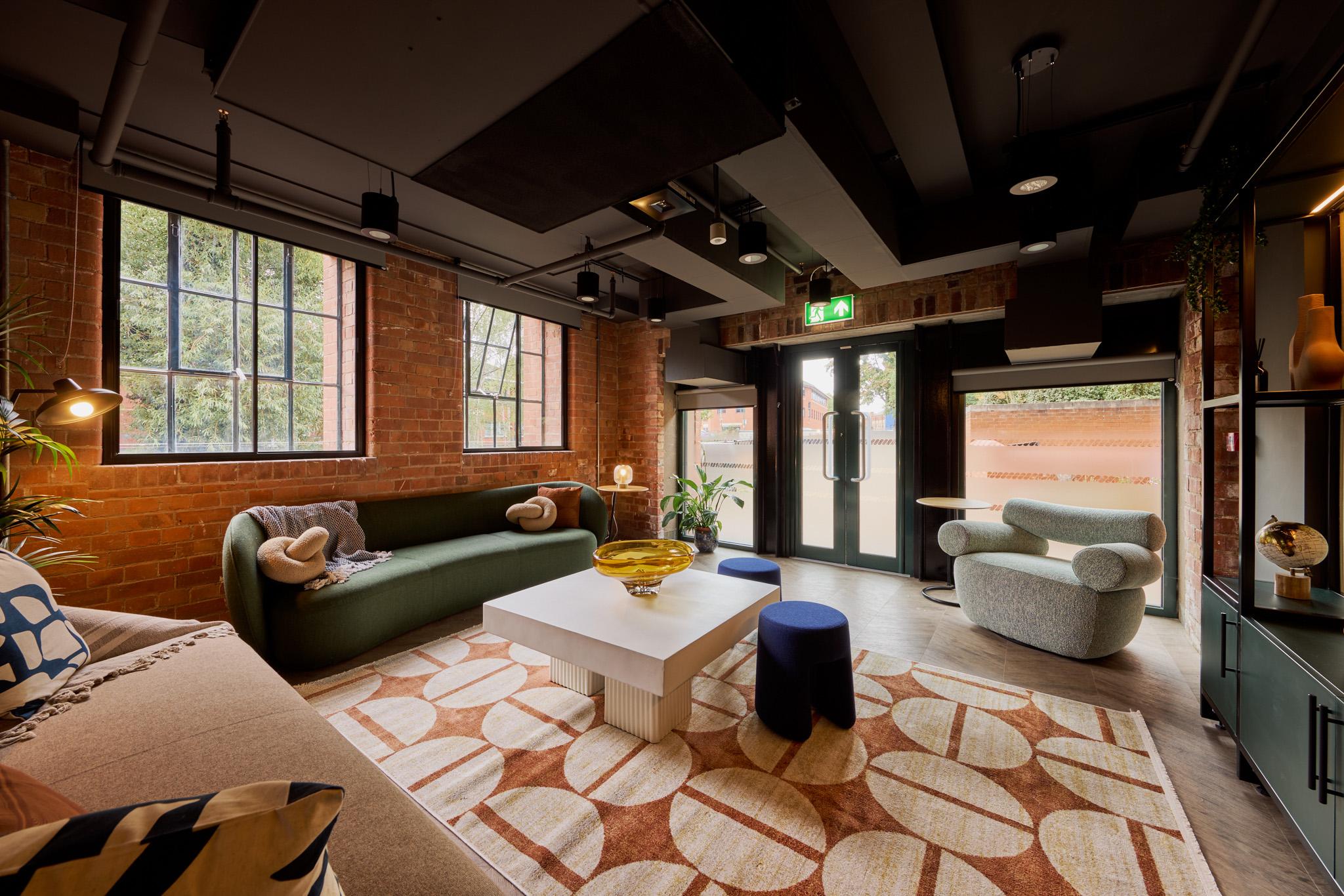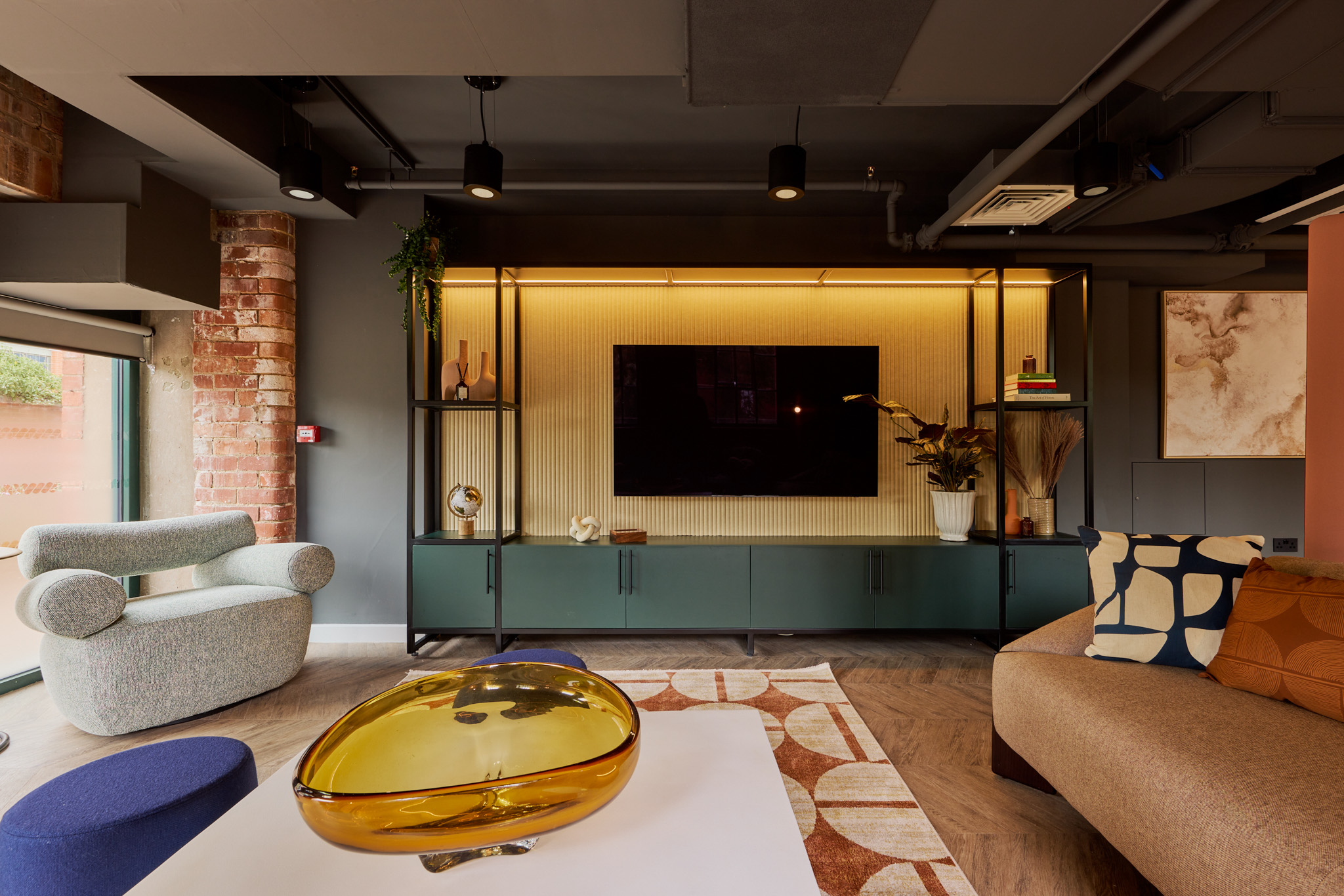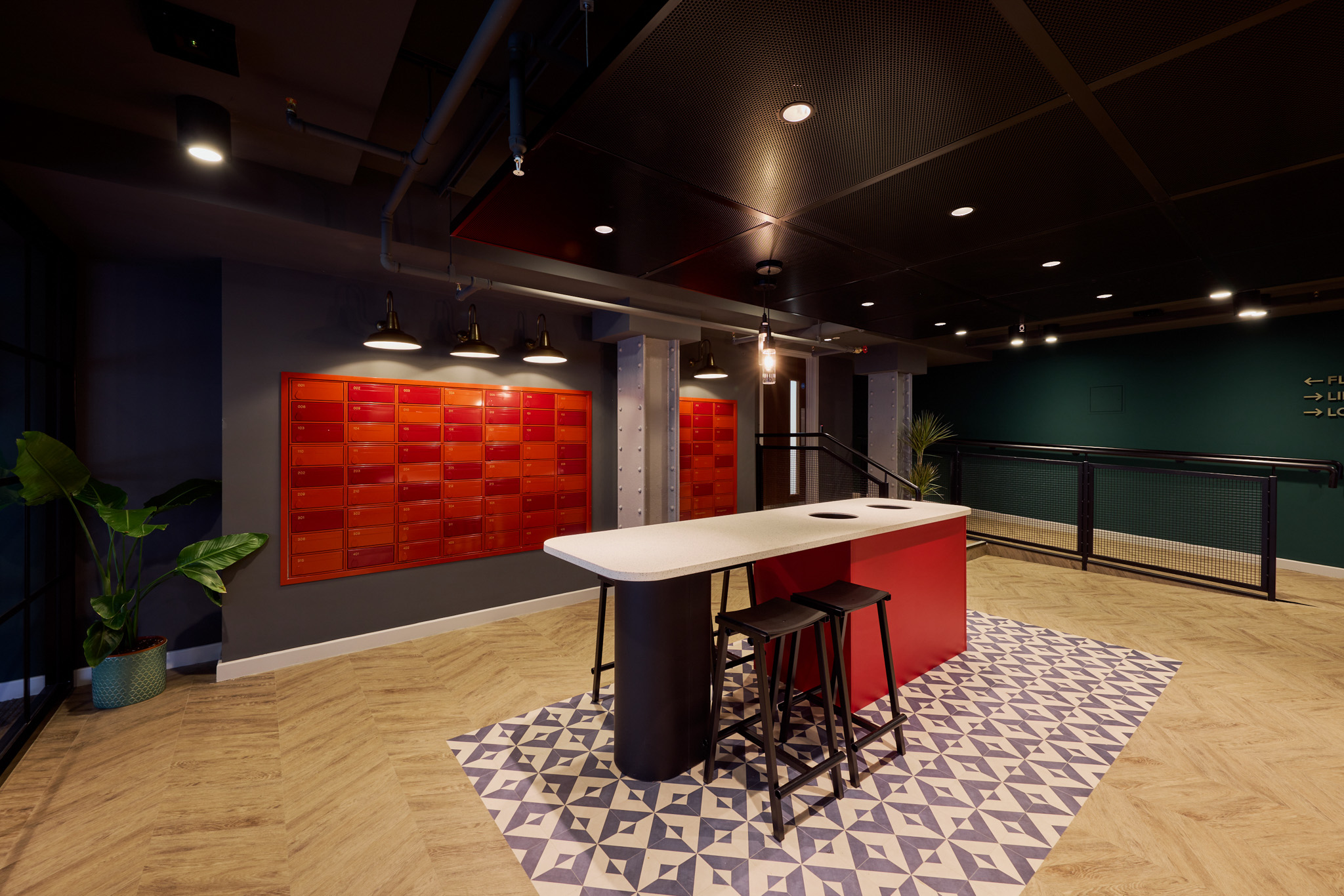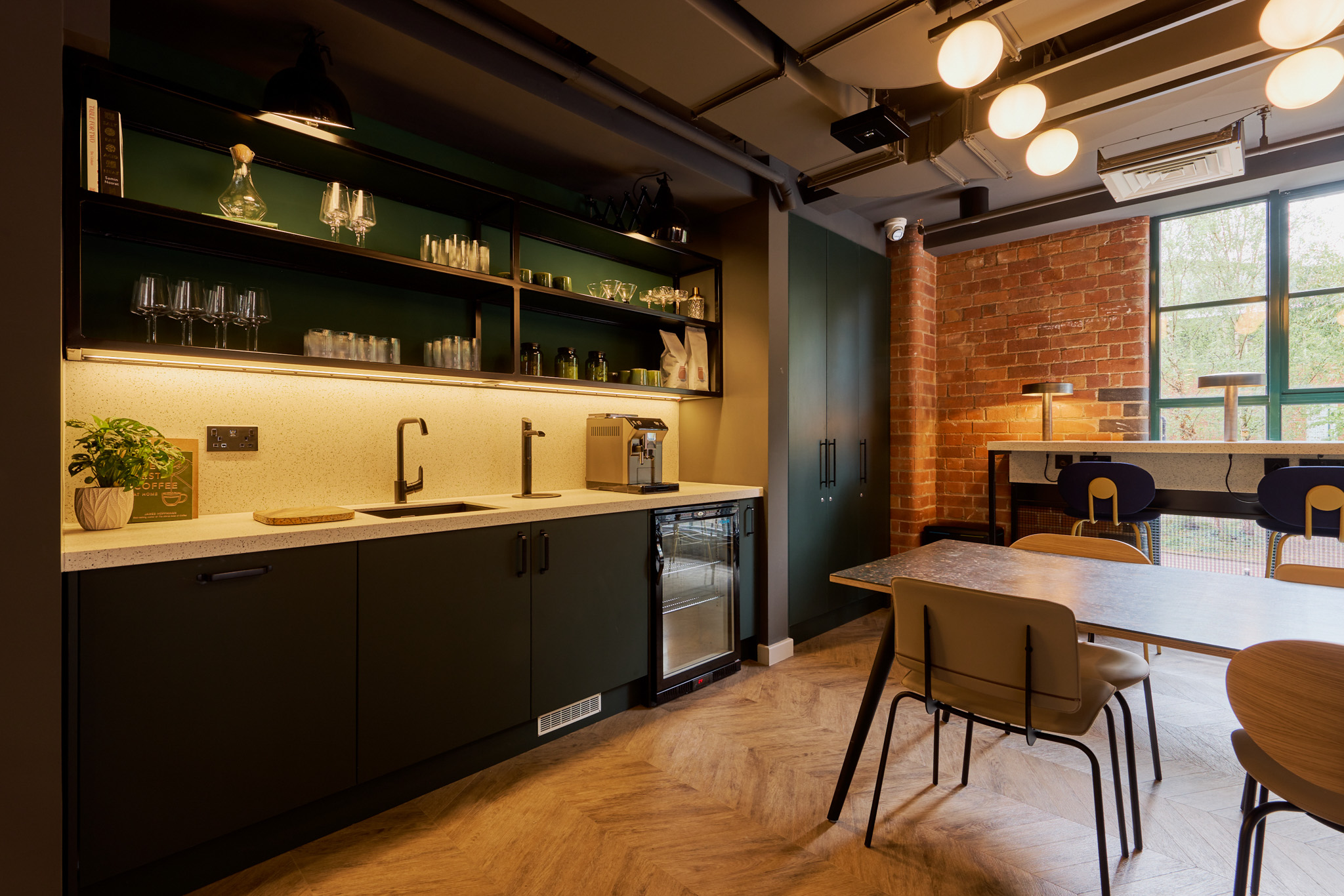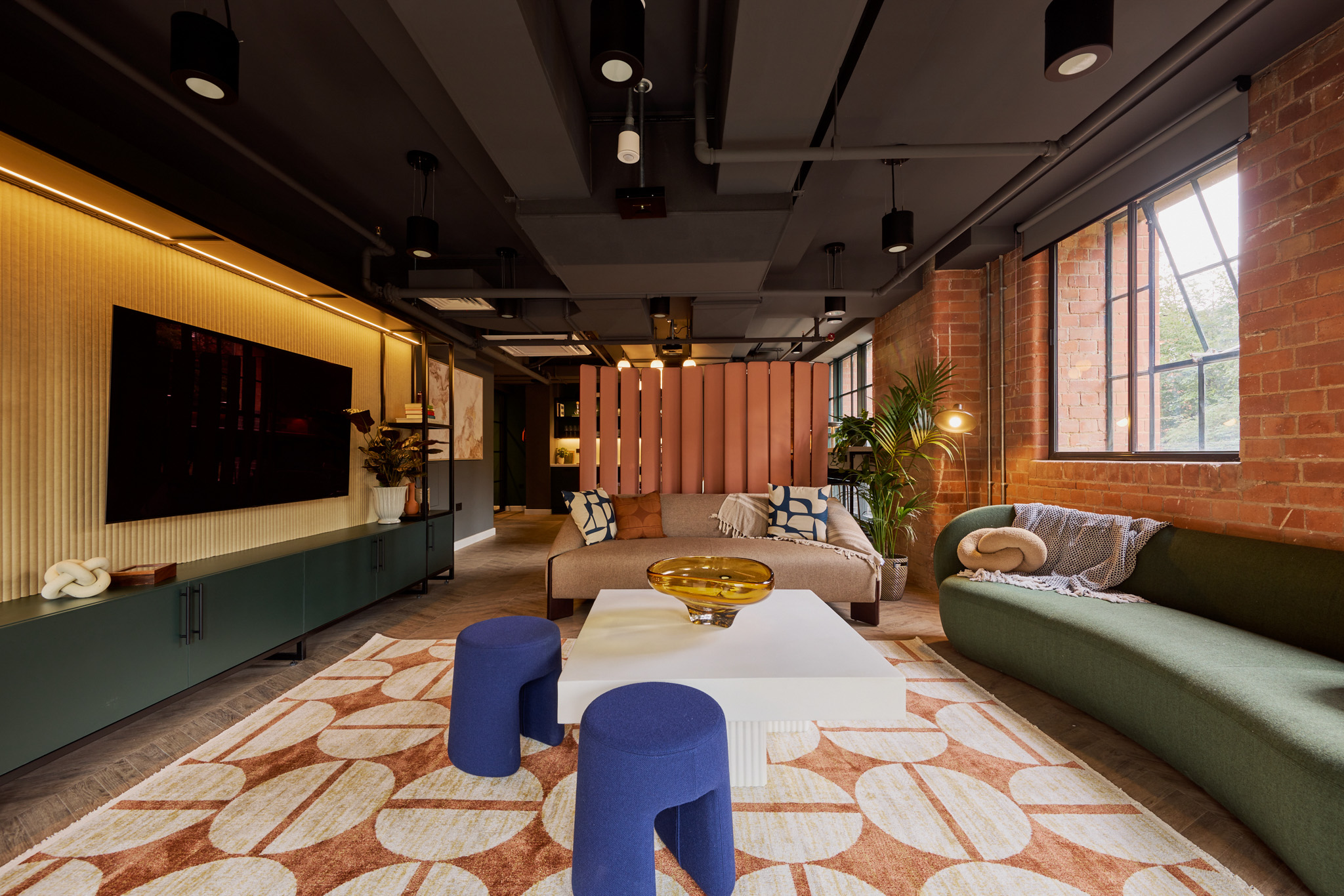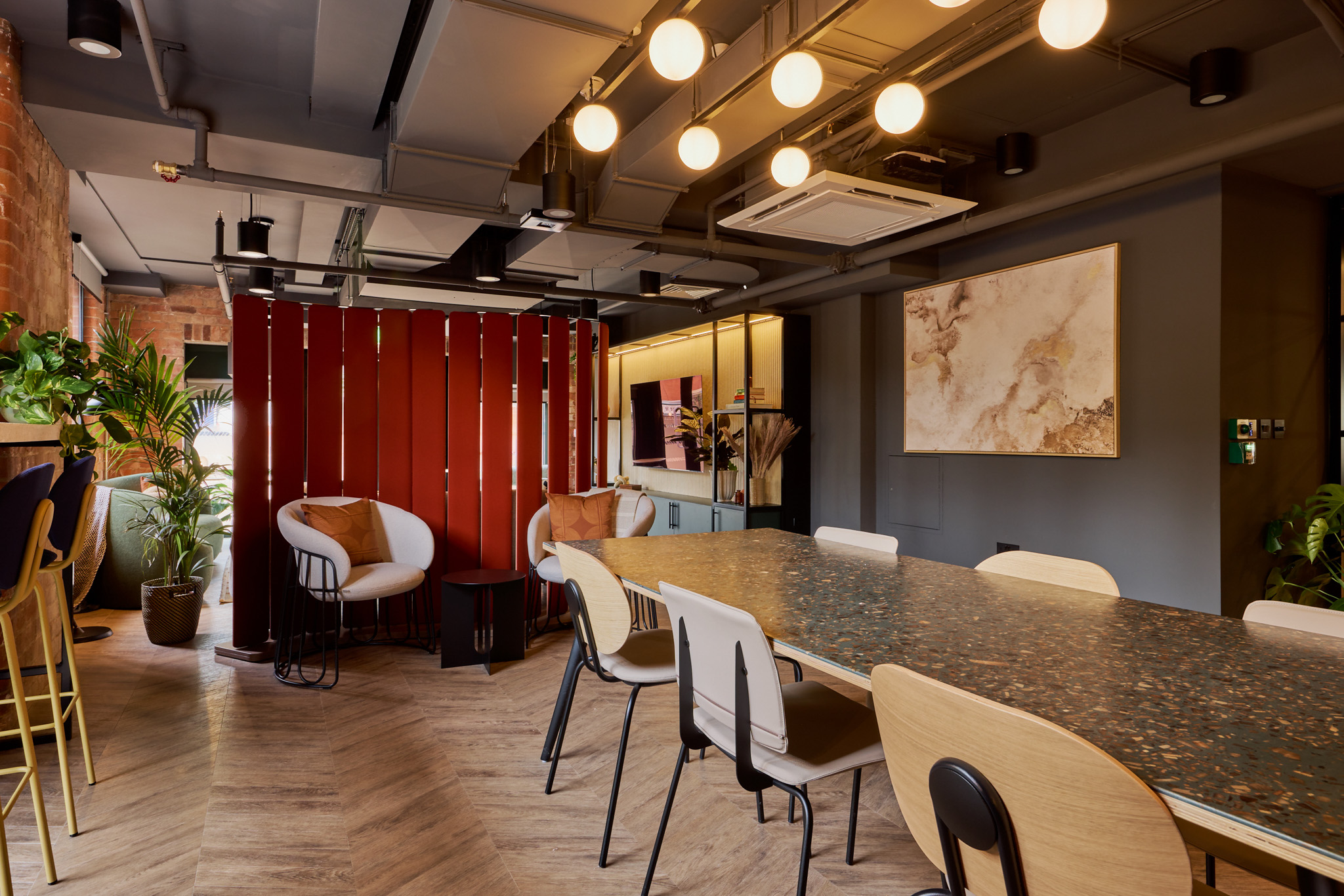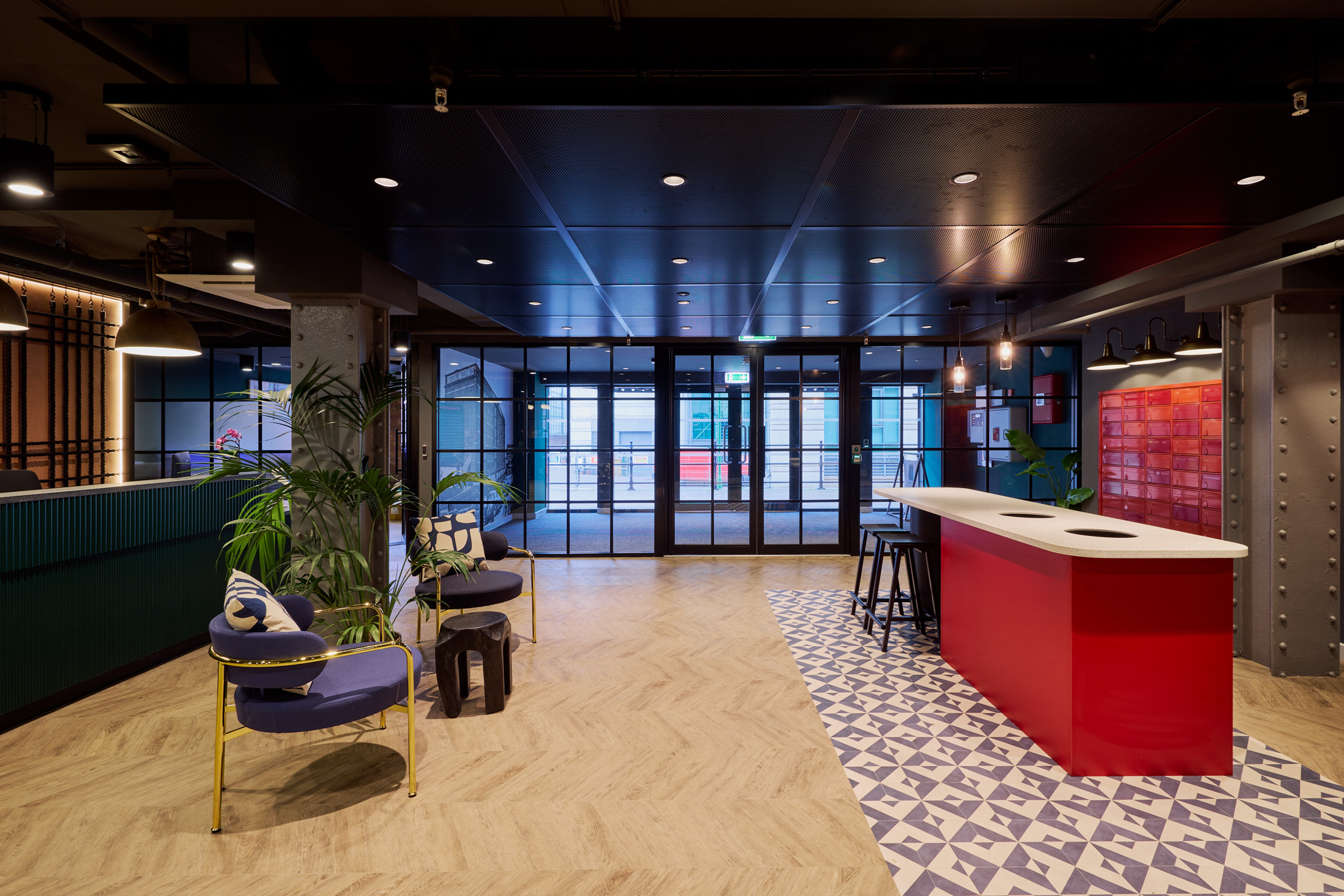As the architectural team concentrated on technical details such as fire safety and structural integrity, the interior designers developed mood boards and concepts that aligned seamlessly with the overall vision. This early alignment ensured that, although apartment layouts were already fixed, the interior design team could still shape the identity of the shared spaces. The result was a clear, unified direction from the beginning, minimising the need for revisions later in the process. Client feedback further refined the design but ultimately reinforced the original concept, highlighting the value of early collaboration.
Lead Architect Chris recalls that the size and placement of these systems, particularly within the residents’ lounge, posed major spatial challenges. The original renders envisioned a more open, airy environment, but adjustments were required to accommodate essential ductwork due to the building’s existing structure.
Despite these constraints, the interior design team, led by Viktorija, adapted the concept to preserve the building’s industrial character. Materials and finishes were carefully selected to reflect the British Waterways building’s heritage, resulting in a cohesive, refined aesthetic that balanced practicality with design integrity.
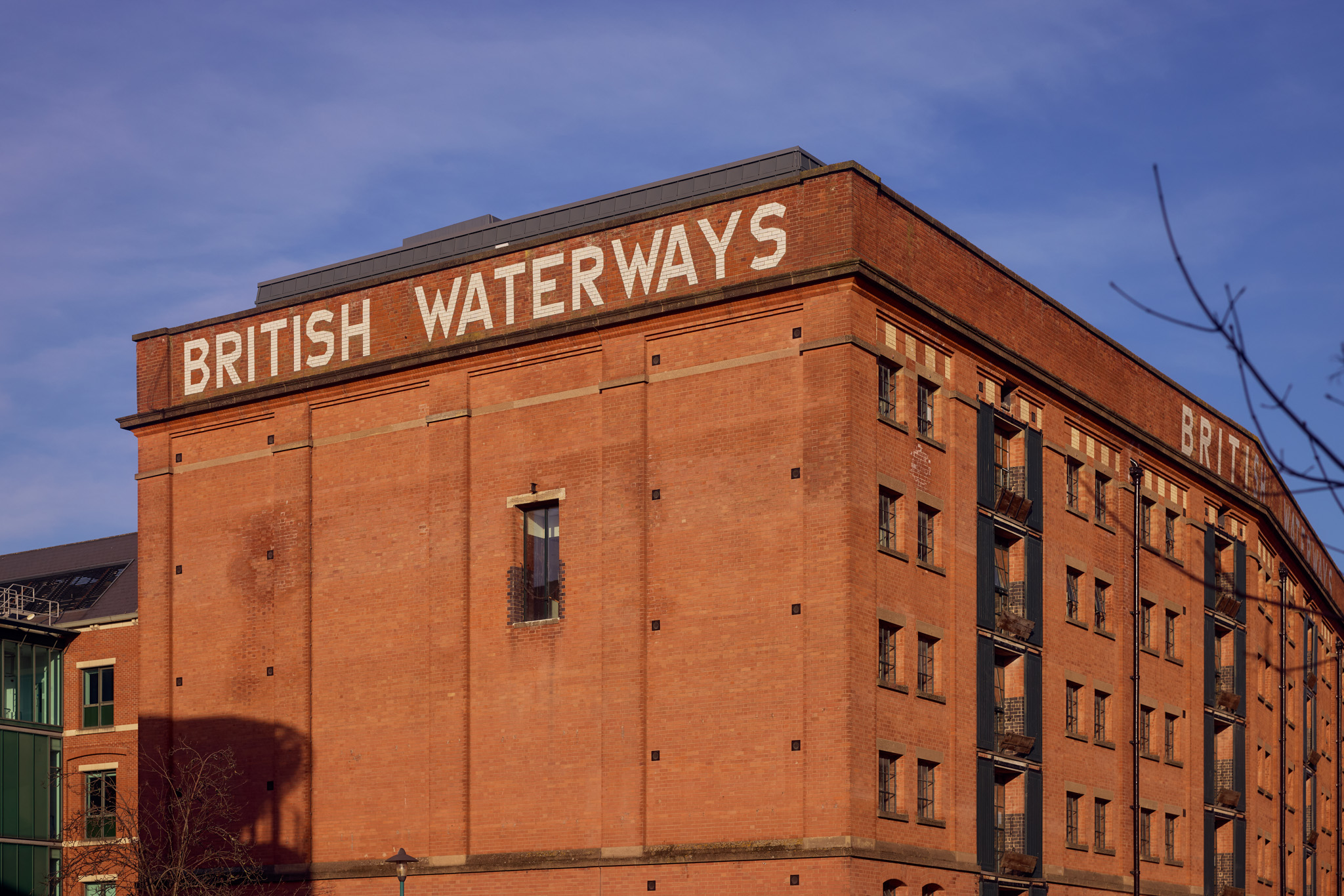
However, as Viktorija notes, there’s always room for improvement. Earlier involvement of interior designers in layout review stages could further enhance the balance between aesthetics and functionality, strengthening collaboration from the very beginning of each project.
